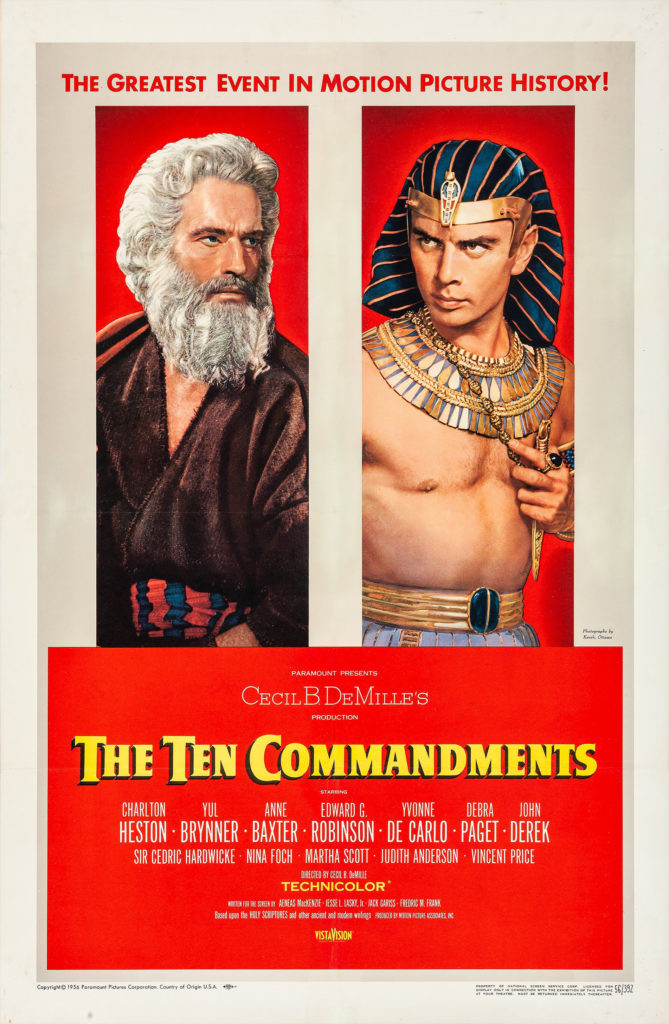Despite all the differences that (correctly) separate us, we have much in common with Roman Catholicism: Rome affirms the great ecumenical creeds of the first millennium; affirms the Trinity, as well as the virgin birth and resurrection of Christ; declares that the Bible is the Word of God. However, one thing we don’t have in common is the Ten Commandments. To be clear, the Roman Catholic Bibles include Exodus 20 and Deuteronomy 5. two, being the ninth and the tenth: “Tie your neighbor’s goods. “However, Rome does not end with eleven commandments, for it combines those we consider the first and the second.
The division of the tenth commandment probably seems artificial and unnatural to any impartial reader. Having said that, I am sure that many Protestants have only a dark understanding of the difference between the first and second commandments. The first forbids us to have other gods before God; the second prohibits the production of sculpted images. Aren’t they both mere ordinances that we do not worship false gods and only worship the living and true God?
- No way.
- The first commandment.
- More than enough.
- Rejects any form of worship to someone other than the living God; it doesn’t matter if you do it through sculpted images; the second commandment explores a different question: it forbids the worship of the true God through the use of images.
Remember when Aaron made the golden calf? He said this: “Are these, Israel, your gods, who took you out of the land of Egypt?”(Exodus 32. 4). He did not say to the people, “Do you know Yahweh, the God with whom Moses met, who we thought had freed us from slavery and opened the Red Sea?Turns out he wasn’t the one who did this before, was he a different deity, this one?In fact, in the following verse we read that Aron said, “Tomorrow will be a feast for the Lord. “The golden calf was less a violation of the first commandment than a violation of the second.
We come to the same distinction when considering our own inclinations. Since most Westerners, believers or not, are not inclined to lean over the statues, we may be tempted to think that idolatry has been left behind. But in our most honest moments, we recognize that we have built our own gods from the things we desire most; for some, money, for others, reputation, etc. This is all true. But again, this is more of a first-command problem than a second command problem.
So considering that we are not so inclined to bow to statues, including statues designed to represent the living and true God, does this mean that we have overcome the Second Commandment?No way. We break the second commandment as we seek to worship the true God through images, including images incorporated into our minds. (Remember that few, if any, really believed that the god they built was a real god. Even the most primitive societies saw statues and images as aids for worship, tools by which he worshipped a true god, not as the gods themselves).
Our disbeliever neighbors are often surprisingly honest about their own idolatry. In fact, most of them have given a name to the god they believe exists and worship it through an image they have built. They call their god “God to me”. Have you ever heard people say, “Well, God to me is like a force of love around me” or “God for me wants me to do what I think is best. “It should come as no surprise that God’s model for me, the way we try to copy it when it’s built, is ourselves. In fact, if our non-believer neighbors were a little more honest, they would confess that the name of their god is “God-III. “
The Ten Commandments, though universally obligatory, were given primarily to the covenant people of God, and God never wastes his breath. If God’s people needed to be warned against idolatry, you can bet it’s because we idolize it too. Sometimes our idolatry appears in our theological debates. How many times have you heard someone say (or say it yourself): “I could never worship a God who ???If what comes next is something that really describes the God of the Bible, then it is a confession that he could never worship the true God. When we say, “I prefer to focus on the kindest God Testament, “we commit idolatry (and forget that God only killed an innocent man once, and that was in the New Testament). Do we have gods for me? Too many even in the evangelical church. “
The second commandment commands us to worship God as it is and to do what he has commanded us to do. When my father was a young seminarian, he wrote a card he put on his desk. “Your duty,” the card says, “is to believe and preach what the Bible says, not what you would like it to say. “The second commandment tells us that it is our duty to believe, learn, love, and worship the God he is, not the god we would like him to be.
By: R. C Sproul Jr. © 2015 Ligonier Ministries. Original: you won’t get a sculpted image.
This article is part of the June 2015 issue of Tabletalk magazine
Translation: Vin-cius Silva Pimentel. Review: Vin-cius Musselman Pimentel. © 2014 Faithful Ministérium. All rights reserved. Website: MinistryFiel. com. br. Original: You will not make the image of sculpture by yourself.

